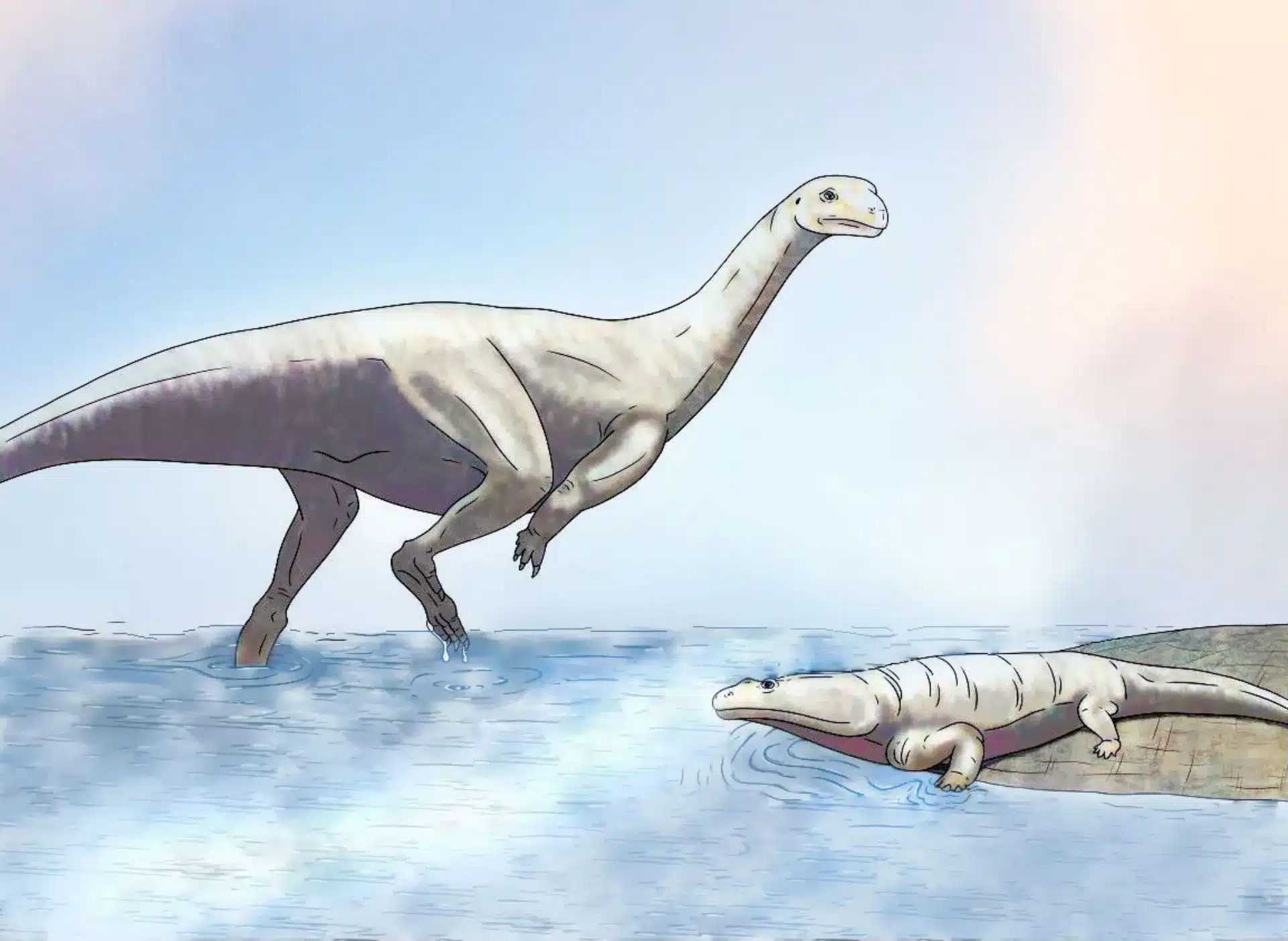About Musankwa sanyatiensis:
- It is a new dinosaur species which has been identified from fossils discovered along the shores of Lake Kariba in Zimbabwe.
- The dinosaur’s genus name, “Musankwa,” was the name of the houseboat scientists used during their expeditions to the research site.
- In addition, its species name, “sanyatiensis,” alludes to the Sanyati River that flows into Lake Kariba.
- It is the first dinosaur to be named from the Mid-Zambezi Basin of northern Zimbabwein over 50 years.
- Additionally, it is only the fourth dinosaur to be named from Zimbabwe, following the descriptions of “Syntarsus” rhodesiensis in 1969, Vulcanodon karibaensis in 1972, and, most recently, Mbiresaurus raathi in 2022.
- The rocks yielding this new specimen date back to the Late Triassic period, approximately 210 million years ago.
- Musankwa sanyatiensis is represented by the remains of a single hind leg, including its thigh, shin, and ankle bones.
- Evolutionary analysis reveals that it was a member of the Sauropodomorpha, a group of bipedal, long-necked dinosaurs that were widespread during the Late Triassic.
- Interestingly, it appears to be closely related to contemporaries in South Africa and Argentina.
Weighing in at around 390 kg, the plant-eating Musankwa sanyatiensis was one of the larger dinosaurs of its era and mostly lived in swamp areas.
Q1: What is the Triassic period?
The Triassic Period was the first of the three geologic periods of the Mesozoic Era. The Triassic began approximately 252 million years ago at the end of the Permian Period and ended about 201 million years ago at the start of the Jurassic Period. The Triassic Period followed on the heels of the Permian extinction, the largest mass extinction in the history of Earth. The name Triassic derives from the Trias, a sequence of three rock strata, or layers, in Germany that lay above Permian rocks and below Jurassic rocks. The Triassic Period marked the start of major changes that were to take place throughout the Mesozoic Era, particularly in the arrangement of continents, the evolution of life, and the geographic distribution of living things.
Source: Musankwa sanyatiensis, a new dinosaur from Zimbabwe discovered
Last updated on November, 2025
→ Check out the latest UPSC Syllabus 2026 here.
→ Join Vajiram & Ravi’s Interview Guidance Programme for expert help to crack your final UPSC stage.
→ UPSC Mains Result 2025 is now out.
→ UPSC Notification 2026 is scheduled to be released on January 14, 2026.
→ UPSC Calendar 2026 is released on 15th May, 2025.
→ The UPSC Vacancy 2025 were released 1129, out of which 979 were for UPSC CSE and remaining 150 are for UPSC IFoS.
→ UPSC Prelims 2026 will be conducted on 24th May, 2026 & UPSC Mains 2026 will be conducted on 21st August 2026.
→ The UPSC Selection Process is of 3 stages-Prelims, Mains and Interview.
→ UPSC Result 2024 is released with latest UPSC Marksheet 2024. Check Now!
→ UPSC Prelims Result 2025 is out now for the CSE held on 25 May 2025.
→ UPSC Toppers List 2024 is released now. Shakti Dubey is UPSC AIR 1 2024 Topper.
→ UPSC Prelims Question Paper 2025 and Unofficial Prelims Answer Key 2025 are available now.
→ UPSC Mains Question Paper 2025 is out for Essay, GS 1, 2, 3 & GS 4.
→ UPSC Mains Indian Language Question Paper 2025 is now out.
→ UPSC Mains Optional Question Paper 2025 is now out.
→ Also check Best IAS Coaching in Delhi

















